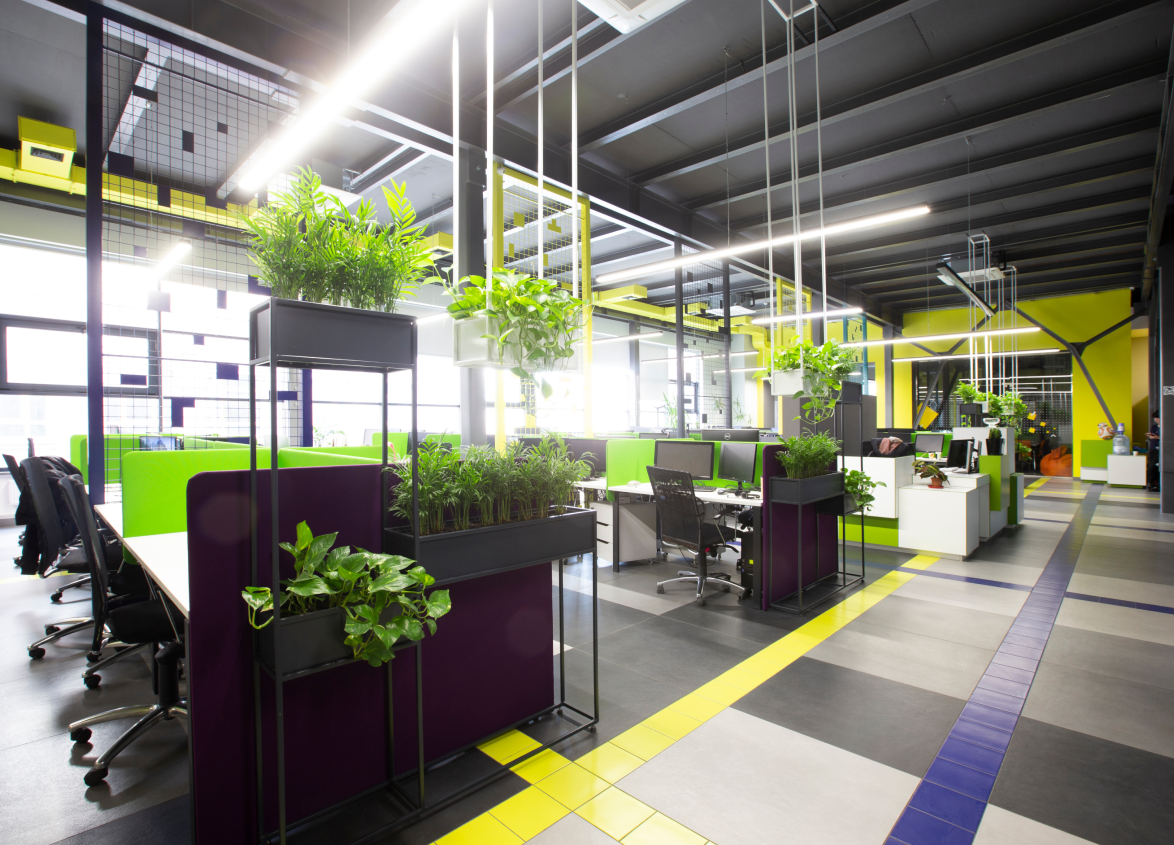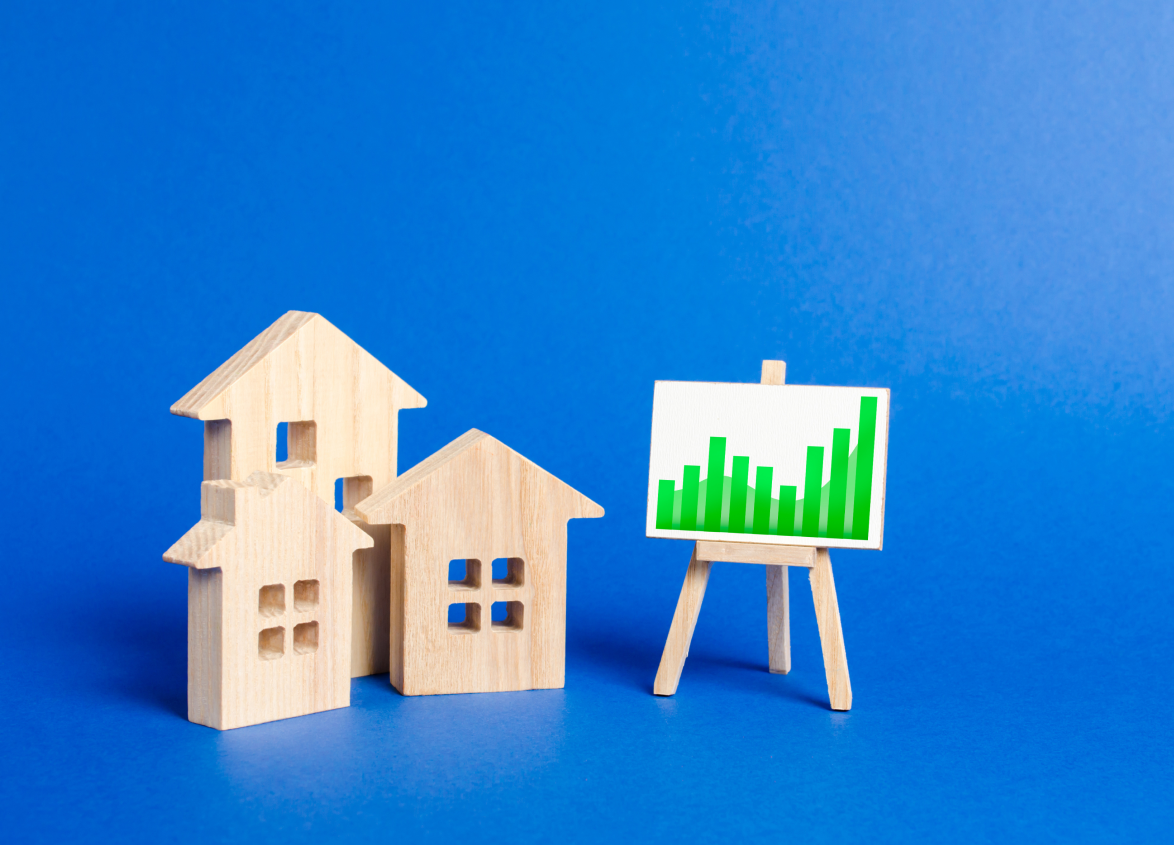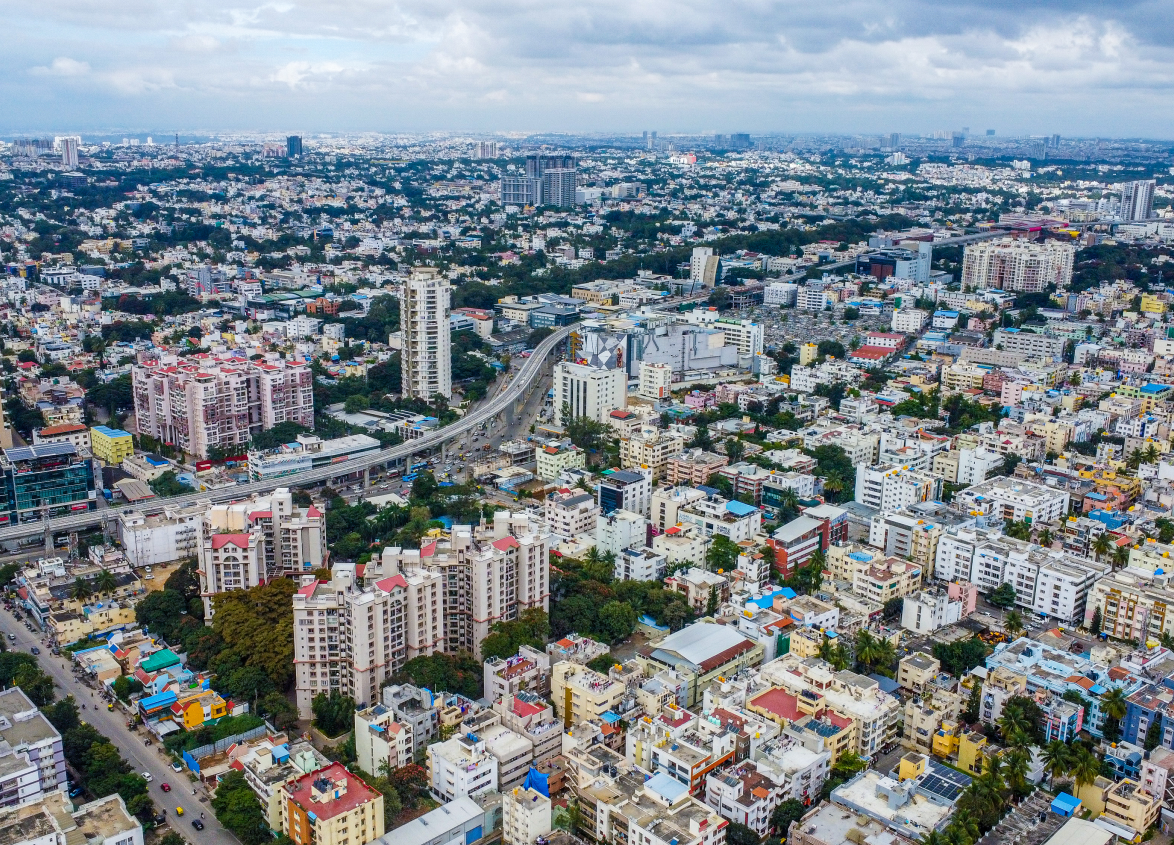
Retail
Sustainable Retail: How Eco-Friendly Practices Are Shaping Modern Shopping Destinations
January 23, 2025
The global dialogue on climate change, resource scarcity or waste disposal has its anchor in industries that have a more massive environmental footprint, including retail. The retail industry is considered among the largest consumers of resources and productions of waste as it provides a space link for facilitating sustainability.
Lately, several changes have occurred regarding the influence of growing external environmental issues and the changing values of customers in the retail domain.
This change further paves the way for sustainable retailing. To support this, companies began using green practices to protect the environment. As a result, sustainable retail diminishes the ecological footprint while attending to customer needs for responsible consumption.
This responsibility goes beyond compliance by creating a scenario where retail can pave the way by promoting a culture of innovation and accountability. Retail sustainability has many facets, including operating energy-efficient stores to the recycling and biodegradability aspects of the products.
The practices have not only shown environmental benefits, but also fit into the emerging new generation of eco-conscious consumers who want transparency, ethics and green business standards. Sustainable shopping actually means a perfect equilibrium between profit, consumer experience, and the preservation of the environment.
This blog column includes trends, challenges, and opportunities that will help shape the future of retail and sustainability. It illustrates the ways in which businesses may implement their strategies for an emerging sustainable future.
Understanding Sustainable Retail
The new definition of sustainable retail includes remodeling the retail landscape in an effort to match business practices with environmental and ethical factors. As consumers' demand for accountability and eco-conscious products grow, it compels retailers to reduce their negative environmental footprint while contributing to long-term growth.
Sustainable Retail integrates practices that include waste reduction, resource conservation, labour, and sourcing into its core. Sustainability has evolved from just offering eco-friendly products to a comprehensive, end-to-end commitment to environmental responsibility. From energy-saving operations to a transparent supply chain, everything is thought out to bring commerce into harmony with environmental and social welfare.
Defining Sustainable Retail
Sustainable retail is defined as environmental and social responsibilities integrated through the entire value chain that characterise the overall retail industry. These processes include sourcing sustainable materials, minimising energy consumption, cutting down on waste and ensuring good labour practices.
Such efforts create a balance that allows a business to meet the demands of its consumers and leaves a positive impact on this planet and society. Business initiatives help balance the diverse expectations of consumers and create a healthier planet and society. Ecologically, friendly retail strategies can serve as an increasing preference for consumers of green commodities while ensuring that their operations remain compatible with global sustainability objectives.
The Role of Retail and Sustainability
The relationship between retail and sustainability is very important because this industry consumes resources, creates waste, and emits greenhouse gases in large quantities. This becomes the responsibility and opportunity that is exclusive for retailers to innovate now and lead sustainability ahead.
Sustainable practices help retailers reduce the carbon footprints of their own businesses and invest in ethical supply chains, giving their consumers what they want in terms of possible goods.
In addition to the environmental aspect, sustainability in the retail industry provides consumer retention opportunities and improved reputation while still ensuring compliance with regulatory requirements.
Key Sustainability Trends in Retail
The changing trends in the retail industry concern innovative measures in the environment, as well as consumer inclination towards "greener practices." This trend indicates the gaining importance of sustainability in the retail industry, with retailers moving not only proactively to create green value but also to reduce their environmental footprint.
Renewable Energy and Energy Efficiency
Retailers have gradually used renewable energy, including wind and geothermal sources, to decrease the consumption of fossil fuels. Increased adoption of trends, including rooftop solar installations, investments in renewable energy credits, and the deployment of smart energy systems to optimise energy consumption, is highlighted.
Apart from the above, the other measures taken to further curb energy usage include introduction of LEDs, energy efficient occupancy lighting, and smart HVAC or refrigeration solutions. As a result, energy costs are lowered and the environment is shown to be worth its salt, which is one of the contemporary consumer standards.
Reducing Waste and Promoting Recycling
Reducing waste is one of the key elements for building retail sustainability trends, given that landfilling and packaging waste are among the greatest environmental issues. Many retailers have started to adopt practices such as offering biodegradable or minimal packaging, utilising refill stations, and carrying out waste diversion programs.
Companies have also introduced some important recycling initiatives. They have preferred these in-store recycling or take-back programs for a range of products, from electronics to textiles to plastics, to ensure repurposing or responsible disposal.
Sustainable Materials in Retail Products
Product lines across industries are changing in terms of sustainable materials. Retailers have placed utmost importance on sourcing their products as organic, recycled, or ethically sourced in order to minimise dependency on finite resources.
For example, many clothing brands today use organic cotton, bamboo, or recycled polyester, which is an improvement over regular cotton or polyester. Home goods manufacturers, on the other hand, use reclaimed wood or low-impact metals. This trend indicates the expanding demand for such products among consumers who desire sustainability in retail industry values. They provide ethical alternatives without compromising on quality.
Embracing Circular Economy Principles
The circular economy lays emphasis on the approaches to designing it while considering the products and business models that highlight reuse, repair, and recycling rather than conventional consumption. The model as above offers a great solution for waste reduction through a more sustainable method of production and consumption.
Different kinds of initiatives have been adopted by retailers such as rental programs, refurbishment, and resale markets in which products in such a state live longer lifecycles. Committed customers embrace such things because they tend to offer greener and economical alternatives in shopping at the end of the day.
In such scenarios, businesses will knock the obstacles of environmental sustainability, regulatory compliance, and, finally, a competitive advantage through these retail sustainability trends. However, actually going to the marketplace with new strategies indicates that retail is moving towards truly being much more sustainable and resilient.
The Rise of Sustainable Shopping
The retail space is rapidly changing since shopping is becoming more and more about sustainability. People are very conscious of the environment, so in turn, stores have to move toward the path of following the trend with their environmental and ethical practices.
Sustainable retailing is a lasting trend that is here to stay in consumer behaviour and retail strategic adaptation, owing to the growing public awareness of climate change and resource depletion and the need for transparency. The progressive retailers that move into sustainable retailing are enjoying superior customer loyalty, brand differentiation, and long-term profitability.
Two key drivers - rising consumer demand for sustainable practices and the surge in ecommerce and secondhand shopping - are reshaping the retail landscape with far-reaching consequences.
Consumer Expectations for Eco-Friendly Practices
Current trend seekers demand accountability, especially when it comes to taking accountability for their environmental impact. Shoppers prefer brands that give information about their entire operation from sustainable sources to ethical labour practices. Such anticipations have joined retail and sustainability into a single brand for consumers.
Retailers are responding by introducing green product lines, showcasing certifications such as Fair Trade or organic labels, and publicly sharing sustainability reports. These actions build trust and loyalty, especially among younger demographics who prioritise sustainability in their purchasing decisions.
This alignment with consumer values ensures that sustainability in the retail industry is not just a moral imperative but also a competitive advantage. Retailers that fail to adapt risk alienating a growing segment of eco-conscious customers.
The Impact of Recommerce and Secondhand Shopping
Recommerce, or the resale of previously owned goods, is a rapidly growing sector that reflects the principles of the circular economy. Consumers are gravitating toward secondhand shopping as a sustainable alternative to traditional retail, driven by its affordability, environmental benefits, and reduced waste.
Retailers are capitalising on this trend by launching their own ecommerce platforms, partnering with resale companies, or creating in-store trade-in programs. For example, clothing brands now offer buy-back programs that refurbish and resell pre-loved items, extending the lifecycle of products.
Secondhand shopping reduces the demand for new resources and mitigates waste, making it an integral part of sustainable shopping. Retailers integrating ecommerce into their models not only support sustainability in the retail industry but also appeal to consumers seeking budget-friendly and environmentally responsible choices.
By addressing these factors, retailers can ensure they remain relevant in an era where sustainable retail is no longer optional but essential for success.
Enhancing Customer Engagement through Sustainability
Incorporating sustainability into retail operations is not just about addressing environmental concerns—it’s also a powerful way to deepen customer engagement. Consumers today expect brands to align with their values, particularly those related to environmental and social responsibility.
By adopting sustainability in the retail industry, businesses can foster trust, build loyalty, and create meaningful connections with their customers. Sustainable practices provide a platform for storytelling, education, and collaboration, transforming retail spaces and experiences.
From offering transparency in operations to designing innovative shopping environments, retailers are making sustainable shopping an integral part of customer engagement strategies.
Building Trust with Transparent Practices
Transparency is a cornerstone of retail and sustainability. Customers want to know where products come from, how they are made, and the environmental impact of their purchases. Retailers are meeting this demand by openly sharing information about their supply chains, sourcing materials responsibly, and committing to reducing their carbon footprint.
For example, brands are using QR codes on products to provide details about their journey from production to shelf, while others publish sustainability reports highlighting progress on environmental goals. Such transparency not only builds trust but also positions the retailer as a leader in sustainable retail.
By demonstrating accountability and showcasing measurable achievements, retailers strengthen their relationship with eco-conscious consumers, turning transparency into a competitive advantage.
Creating Experiential and Sustainable Shopping Environments
Retailers are redesigning their physical and digital spaces to reflect their commitment to sustainability in the retail industry. Sustainable shopping environments immerse customers in the brand’s eco-friendly values, enhancing the overall shopping experience.
For physical stores, this might include using renewable materials for construction, installing energy-efficient lighting, or offering recycling stations. Digital platforms, on the other hand, can showcase the retailer’s green initiatives through interactive content, sustainability calculators, or virtual tours of eco-friendly manufacturing facilities.
By creating these immersive experiences, retailers inspire customers to make more informed and responsible choices. These environments not only highlight the retailer’s commitment to sustainable retail but also encourage ongoing engagement and brand advocacy.
Incorporating sustainability into customer engagement ensures that retailers attract eco-conscious shoppers and create lasting relationships that drive loyalty and business success.
Measuring the Success of Retail Sustainability Initiatives
Measuring the impact of sustainability in the retail industry is essential for determining the effectiveness of eco-friendly initiatives. Retailers need to assess their progress against established goals, identify areas for improvement, and communicate their achievements transparently.
Success in sustainable retail is evaluated through both quantitative and qualitative measures, ensuring that efforts yield tangible results while building trust with stakeholders.
Key Performance Indicators (KPIs) for Sustainability
To effectively track progress, retailers rely on specific Key Performance Indicators (KPIs) that align with their sustainability goals. These KPIs may include:
| KPI | Description | Purpose |
|---|---|---|
| Carbon Emissions | Measures the total greenhouse gas emissions from operations, supply chains, and transportation. | Tracks progress toward reducing carbon footprint and meeting climate goals. |
| Waste Diversion Rate | Calculates the percentage of waste diverted from landfills through recycling, composting, or reuse. | Demonstrates effective waste management and aligns with zero-waste targets. |
| Energy Efficiency | Monitors energy consumption and improvements via renewable energy sources and efficient systems. | Reduces operational costs while promoting eco-friendly energy practices. |
| Water Usage | Tracks water consumption in manufacturing, operations, and supply chain processes. | Identifies opportunities to conserve water and mitigate resource scarcity. |
| Sustainable Product Share | Measures the proportion of products made with eco-friendly, recycled, or ethically sourced materials. | Evaluates commitment to offering environmentally responsible and ethical product options. |
| Supply Chain Transparency | Assesses visibility into sourcing practices and supplier adherence to sustainability standards. | Ensures compliance with ethical and environmental guidelines across the supply chain. |
| Customer Engagement Metrics | Tracks consumer participation in sustainability programs (e.g., recycling initiatives, loyalty for eco-friendly purchases). | Gauges the effectiveness of initiatives in building trust and driving consumer behaviour. |
These KPIs provide a structured framework for measuring and improving sustainability in the retail industry, ensuring that efforts are both impactful and measurable.
Case Studies of Successful Sustainable Retailers
Studying the achievements of leading brands provides valuable insights into effective retail sustainability trends. For instance:
Patagonia: This outdoor apparel brand is renowned for its commitment to sustainability, from using recycled materials in its products to promoting repair and reuse through its Worn Wear program.
IKEA: The furniture giant focuses on sustainable sourcing, renewable energy investments, and circular economy principles, such as buy-back programs for old furniture.
Sephora: The beauty retailer prioritises transparency by offering clean product lines and disclosing ingredient sourcing, helping consumers make informed, sustainable choices.
These examples highlight how successful sustainable retail practices reduce environmental impact and enhance customer loyalty and profitability.
Measuring and showcasing the success of sustainability initiatives not only ensures accountability but also reinforces the retailer’s position as a leader in sustainable shopping.
Conclusion
The integration of sustainable retail practices is no longer an option but a necessity for businesses aiming to thrive in today’s environmentally conscious marketplace. By embracing renewable energy, reducing waste, using sustainable materials, and adopting circular economy principles, retailers are reshaping the industry to align with global sustainability goals.
This shift is driven not only by regulatory pressures and environmental concerns but also by consumer demand for transparency, ethical practices, and sustainable shopping experiences. Retailers that prioritise retail and sustainability are positioned to foster stronger customer relationships, enhance brand reputation, and achieve long-term profitability.
As sustainability in the retail industry evolves, the benefits extend beyond environmental conservation. These efforts create innovative business models, inspire consumer loyalty, and set a foundation for a more equitable and resilient retail ecosystem. Retailers willing to invest in sustainability are not just meeting the demands of the present but shaping the future of commerce for a better planet.
FAQ's
1. What are the key trends in sustainable retail?
Key trends include the adoption of renewable energy, waste reduction, use of sustainable materials, circular economy practices, and the rise of e-commerce and secondhand shopping.
2. How can retailers effectively implement eco-friendly practices?
Retailers can adopt renewable energy, reduce waste, source responsibly, embrace circular economy principles, ensure transparency, and engage customers through innovative programs.
3. What role does consumer behaviour play in retail sustainability?
Consumers demand transparency, prefer eco-friendly products, and increasingly adopt secondhand shopping, driving retailers to align with sustainability values.
4. How can sustainability impact a retailer’s bottom line?
Sustainability lowers costs, builds loyalty, enhances brand differentiation, ensures regulatory compliance, and opens new revenue streams like ecommerce.
5. What are some examples of successful sustainable shopping destinations?
Examples include Patagonia for recycling and repair initiatives, IKEA for circular economy practices, and Sephora for clean product lines and transparency.
MUST READ
Looking for something specific?
We'd be delighted to help you.





























































































































































































































































































































































































